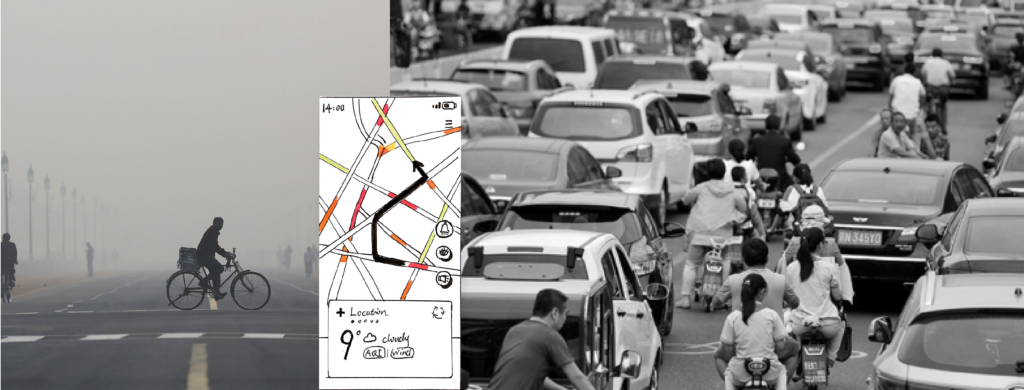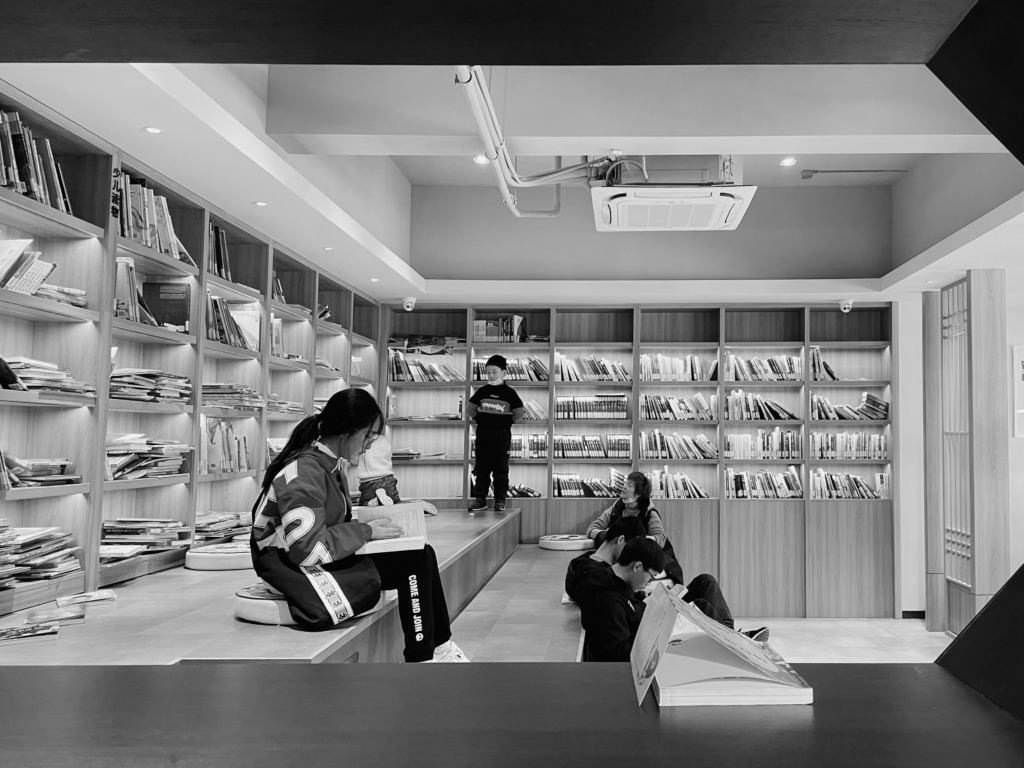Blog 10 Reflective Report
This is the last blog in this semester. And it is about some reflections in the past stage of study.
Reflective Report
Description
I learned some related knowledge of interaction design and user experience through Design and New Media in the past spring semester. During this period of study, a lot of time and work were mainly focused on the research and design thinking process.
Based on continuous excavation of past experiences combined with relevant research information, I finished the production of personal map through trying different ideas in Project 1.
Project 2 is about user research which is aimed to have a comprehensive understanding of the users’ behavior and experience based on observing a certain aspect of people in daily life. My target user group is those who have the spiritual need to go to the library for reading or studying. At first, I went to the library to observe the environment, use several services provided by library and experience what my user target group would do. Through user observations and interviews, I have a deep understanding of the behavior and motivation of this group of people. Finally, I chose empathy map, persona and user journey map to show my analysis of this kind of user group’s experience.
I chose cyclists and motorbike riders as my target user group to design a weather app in Project 3. By downloading the main weather apps in the App store, I learned the key function were already offering to users. I inquired about various data to understand the reasons why user choose using a weather app, included their habits, expectations and some other related information. After that, I did PACT analysis to analyze the characteristics of my user group, the activities they would do, their using context and the technology that would be involved in. Then, I designed the information architecture and interface based on the user modeling to make preparation for the low-fidelity prototype and make an iterative design based on usability testing.
Project 4 is based on the three topics of the Creative Conscience awards combined with the related themes to identify a design challenge and make a response through user-centered, iterative design thinking and approach. The topic I chose is about educational equality, and finally narrowed the design focus to the phenomenon that children with leukemia cannot receive education during long-term hospitalization through a lot of research and exploration.
Interpretation
The ability of design thinking is very significant because it is about how I respond to the design challenge. The basis of thinking comes from the understanding of related knowledge, and knowledge comes from research. The aim of researching is to analyze and extract valuable information based on the collected information and gain key insight from the information which provide the basis for decision-making. This is because the basis of correct decision-making is a sufficient and complete information environment. The information obtained through the research allowed me to build a basic understanding of the topic I chose. I can understand and enrich user experience on the basis of research.
In Project 3, I learned that air quality and traffic congestion are they key factors that affect the willingness of users to ride through researching. It means that I may need to give priority to display the AQI index and show road conditions to provide reminders and guidance for users to travel in the designing process. Through research, I can deeply understand the behaviors, motivations and needs of my target user group by putting myself in their shoes, and produce user modeling as the basis of design thinking.

From information collection, concept extraction to final creation, design is not a step-by-step but an iterative process. Through the understanding of a large amount of information, analysis and refinement to obtain key insights. On the basis of that, the idea is proposed for trial and verification, and redefined according to the feedback. This is a process from complicated and disorderly to clear. So it is very important to find the correct problem which requires a deep understanding of the research object and close to the real needs of users. Then, I can make appropriate solutions and timely adjustments according to the feasibility feedback which is obtained from continuous trial and exploration. If I do not conduct research and get close to users to understand their thoughts and feelings, then the design I am doing is just a concept in my mind which is not supported by facts, which means that I would never come to the real user- centered design.
Evaluation
Actually, this kind of continuous research and put more focus on the process of trial and exploration made me a little confused at first. Because it seems that I have been investigating, but I haven’t gained any key insights. This made me start to doubt what I did. Sometimes, I become vacillated by a large amount of information and gradually deviate from the original theme in the process of comprehending and conceptualizing. For example, in the survey of the people in the library in Project 2, I went to the library for self-study everyday, observed the various activities that people did in this scene, browsed related information on the internet, experienced the services that the library provided and communicated with the staff and so on.

I did a lot of research on the library, but ignored the most important part of this project, my target user group. In fact, the information I encountered in the process of research have their own context and I was unconsciously brought to the context, and being persuaded during the process of reading and in-depth understanding which caused confusion and the loss of my original thought. However, I don’t think this experience is bad because I feel that I have learned a lot from it and have new perception.
Although I spend a lot of time on research other things, this does not mean that the research I did has nothing to do with users. The behavior of users does not exist independently, but exists between their interactions with objects, other people, and the environment. The investigation of user scenarios, the equipment or some other things that users need to interact with can also help me gain a in-depth understanding on their thoughts and experiences from the perspective of users. Besides, I realized that I need to be clear about my position at all times in the process of research, know what I am processing, what I need to know, and what information I collect. At the same time, I need to comprehend the information in a critical way, thinking about the context of the information instead of accepting the whole of it, which means that I need to maintain my independent thinking ability.
Plan
In addition, I should pay more attention to the design thinking progress instead of thinking about the final output at the beginning and what visual style should be adopted to make the outcome look more attractive. Design is the process of establishing a relationship between creativity and expression after having an insight into user needs through putting myself in their shoes. By balancing the choice of content and the form of creative expression to communicate the clearly thinking process, so as to achieve the ultimate goal of improving the user experience. The final design output must be produced after experiencing research-based thinking, so it is also important to show the thinking process behind the output.
I have also read some books related to interaction design before, such as About face 4 the essentials of interaction design by Alan cooper, Thoughts on interaction design by Jon Kolko, etc. And I have a preliminary concept of interaction, user experience, user modeling and other related terms. However, my understanding of these concepts gradually blurred in my mind a few weeks after I closed the book. Because the understanding out of practice means that I have not really mastered these knowledge. And through this stage of study, I have a deeper understanding of these concepts, the process of practicing has also helped me consolidate my comprehension of these knowledge.
After reflection, I will take the process of design thinking more seriously. In the learning phase, the training of design thinking is more important than the final output, because this is a methodology that is closer to the essence of design. At the same time, the in-depth understanding of research can help me have a clearer goal orientation in the future design process, so that I will not lose my original thought in the deluge of information.
Reference:
Nayanathara, R., 2021. PACT Analysis. [online] Medium. Available at: <https://bootcamp.uxdesign.cc/pact-analysis-3ac5fbe8817> [Accessed 12 May 2021].
Lee, P., 2021. Design Research: What Is It and Why Do It?. [online] Reboot. Available at: <https://reboot.org/2012/02/19/design-research-what-is-it-and-why-do-it/> [Accessed 15 May 2021].
Siang, T., 2021. What is Design Thinking?. [online] The Interaction Design Foundation. Available at: <https://www.interaction-design.org/literature/topics/design-thinking> [Accessed 15 May 2021].